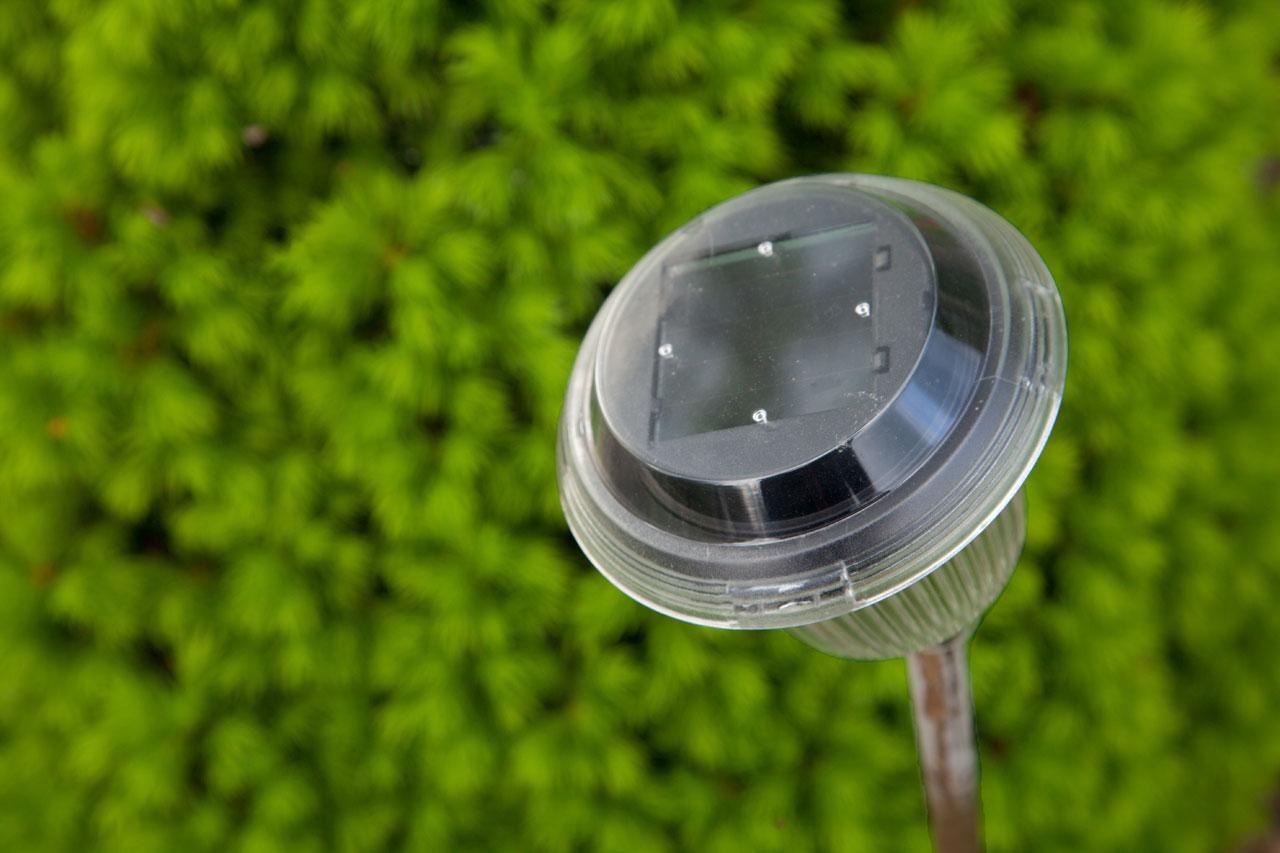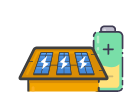How Do Solar Garden Lights Work?
 Solar garden lights operate in a similar way to solar panels – both work through the photovoltaic (PV) effect. The biggest difference is that small scale solar garden lights use the energy generated throughout the day to charge a battery which it then uses to power itself at night.
Solar garden lights operate in a similar way to solar panels – both work through the photovoltaic (PV) effect. The biggest difference is that small scale solar garden lights use the energy generated throughout the day to charge a battery which it then uses to power itself at night.
Traditionally outdoor solar lights will use a crystalline solar cell which sits on top of the light but they can also use a separate panel wired into the light which can be laid or staked into the ground. You can also purchase solar garden lights that use an amorphous cell but these tend to be a lot more expensive.
A step by step guide to solar garden lights
- All solar powered lights will have a small built in solar PV cell. This cell absorbs sunlight and turns it into Direct Current (DC) electricity.
- This electricity is then turned into chemical energy and stored in a rechargeable battery which has been discreetly built into the light.
- A darkness sensor called a photoresistor is the element that decides when the solar light will come on. Throughout the day the photoresistor stops the light from running but when it begins to detect little or no light it will allow it to switch on.
- Once the photoresistor allows the light to turn on, the chemical energy stored in the battery is turned back into electrical output which powers the light.
Why don't solar garden lights work well in winter?
During the winter months you might notice that your solar garden lights don't perform as well and in many cases aren't even active for most of the evening. This comes down to 2 main reasons.
Firstly, winter days are much shorter and often overcast meaning that the solar panel on your garden light is not able to generate as much electricity. Secondly the photoresistor is designed to switch the light on when it detects little to no light - since the evenings tend to start a lot earlier in the winter months the light will switch on much earlier, often draining the battery within a couple of hours.
The only real way to avoid this is to invest in a solar garden light that uses an amorphous solar cell combined with a larger battery. Amorphous cells are known to be more efficient than the crystalline cells typically used in solar garden lights and can generate more electricity in the same circumstances (which can be stored in the larger battery).
Find local, MSC certified Solar Installers
Start your quote
Find local, MSC certified Solar Installers















